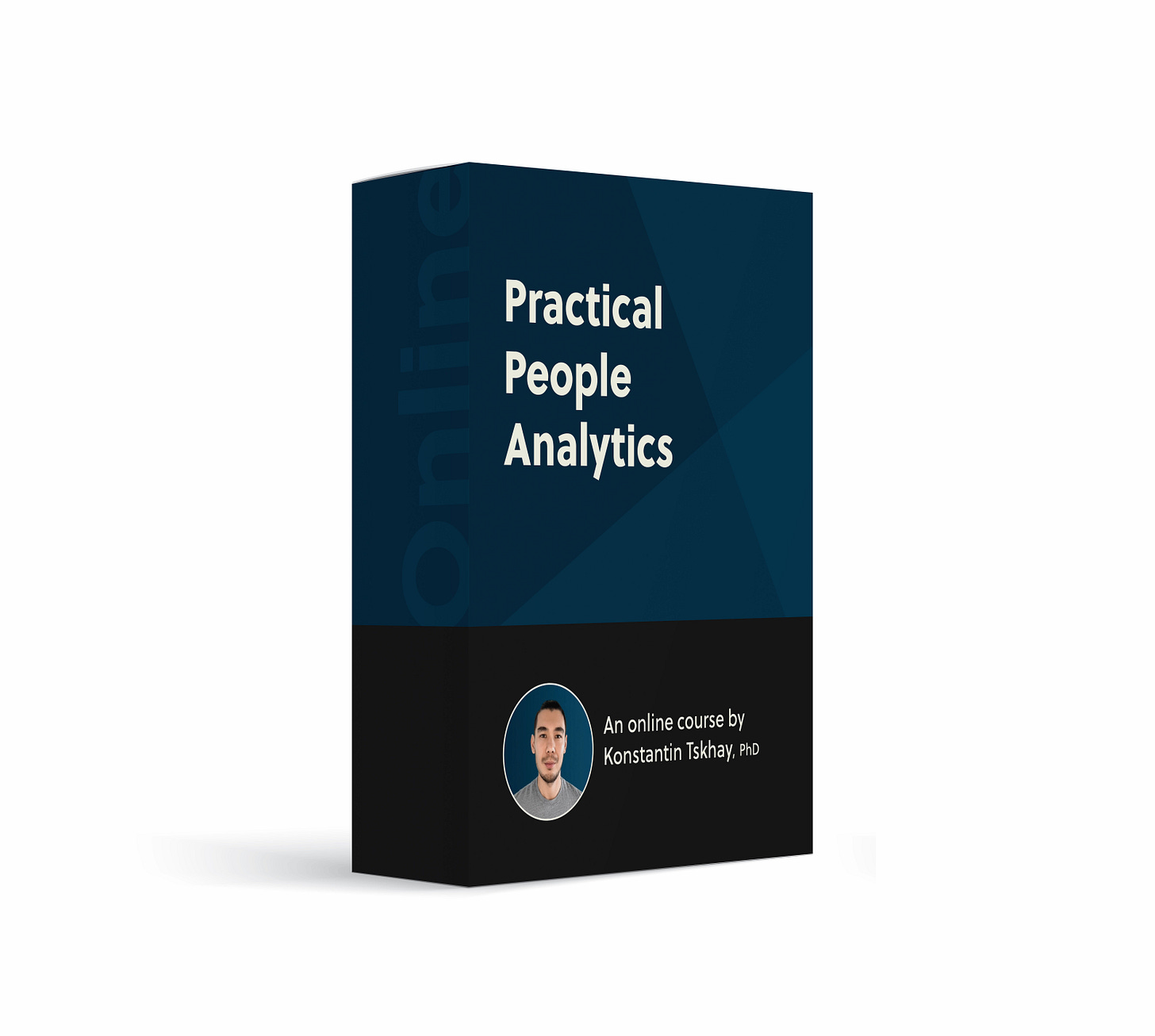Welcome back to the weekly Strategic People Analytics Newsletter!
If you are still lurking, please subscribe!
2 weeks ago, I sent out the HR Dashboards 101 letter, including 4 key questions people ask about dashboards:
What are the key things to include in your dashboard, and why
What NOT to include in your dashboard
What tooling will you need at the minimum
How do I make it useful
And then, someone asked question #5:
Dude, where do I get the data for each of those metrics?
And this inspired HR Dashboard 201: Where do I get the data for my dashboard?
You all inspire me! Please keep’em comments coming!
But also, check out my people analytics course! It really covers this all in detail!
Shall we?
Last week, I covered 3 types of metrics and some metrics aligned with them.
Performance: Metrics focused on business performance
Quota Carrying Headcount: Do you have enough people to bring money in?
Revenue/FTE: How productive is your workforce on average?
Quality of Hire: How good are the people you bring into the organization?
Retention: Metrics focused on workforce planning
Retention: How many people voluntarily stay at the company?
Top Talent Retention: Are you retaining the 20% who deliver 80% of results?
Average Tenure: How much can you expect your people to stay?
Engagement: Metrics focused on employee experience
eNPS: Standard metrics of engagement to get a sense of organizational health?
External Reputation: How do others in the industry see you?
We will tackle each in turn.
Performance
This area of the business presents the most important data that your CEO, CFO, and the board really appreciate. It is about how quickly you can generate revenue for the company.
Hence, given the financial nature of the data, it is key to find it.
Quota Carrying Headcount:
Identify the number of roles assigned a quota on your sales team
Usually, these people will be in Sales and Customer Success
If you don't have the data handy, reach out to your FP&A team for a workforce plan
Identify the number of roles filled with individual sellers
Identify what % of the Quota Carrying Headcount they represent
This will tell you how many people you have versus plan and how many roles you have to fill.
Tip: Configure your HRIS to track the QC headcount by marking each role or creating a custom counter that only identifies the sales role. I know, another dashboard, but it is worth it. Will save you time.
Revenue/FTE
Connect with your FP&A team and ask them for the revenue number if you are at the end of the year
If you are mid-year, ask them for a projection
Divide the number by the FTE - full-time-equivalents from your HRIS
You will find out how much an average worker at your company brings in as revenue
Quality of Hire
This metric is hard to measure.
A simple measure will be the mishire rate or percent of new hires leaving within 6 months, 9 months, and 12 months, depending on how you want to define them.
This data can be found in your HRIS as well!
If you want to go fancier, you might want to start sending managers a survey about the quality of hire.
The former is simple.
The latter is more complex.
The tradeoff is yours.
Retention
This metric will tell you how much people like being at your organization, how much you need to recruit, and how much productivity you might expect from your team.
Let’s start with retention.
Identify your time period
Identify all of the people who left in that time period voluntarily
Identify starting headcount for the period
All these data are in your HRIS
Then, do some math, and you will know your retention rate for the period
Top Talent Retention
The same calculation, but here you only focus on your top talent
This would require triangulation against your performance data
You want your best people to stay in the casa
Tenure
You can easily find this information in your HRIS
It is simply the number of years someone has been at the company
Or, the difference in years between when someone started and today
Engagement
This one you know well—it basically measures how much your people like being at the company, how much they are connected with the work, and how likely they are to make a referral to you.
eNPS
This one will require some data collection for sure
Start by constructing an engagement survey
Then, include the questions:
Would you recommend Company X as a great place to work to family and friends?
Use a 10-point scale here
Once you have the data, it is as simple as computing % of promoters - % of detractors
External Reputation
Much simpler!
Go to Glassdoor to check out what your employees, current and formal, think about you
There is an average score at the top that might be useful
And that, my friends, is it.
To summarize:
90% of your data will be in your HRIS
Some will require a survey
Some will need a friend in your FP&A team
Duces!
K
Learn People Analytics in a Practical Way!
Check out my new Practical People Analytics Course that covers the most common questions I get from HR professionals:
What metrics should I use?
How do I measure engagement?
How do I make sure there is no bias in my comp?
What is the best way to measure performance?
How can I use advanced analytics to drive action?
Which means… you will have everything you need to build your data-driven HR function.







